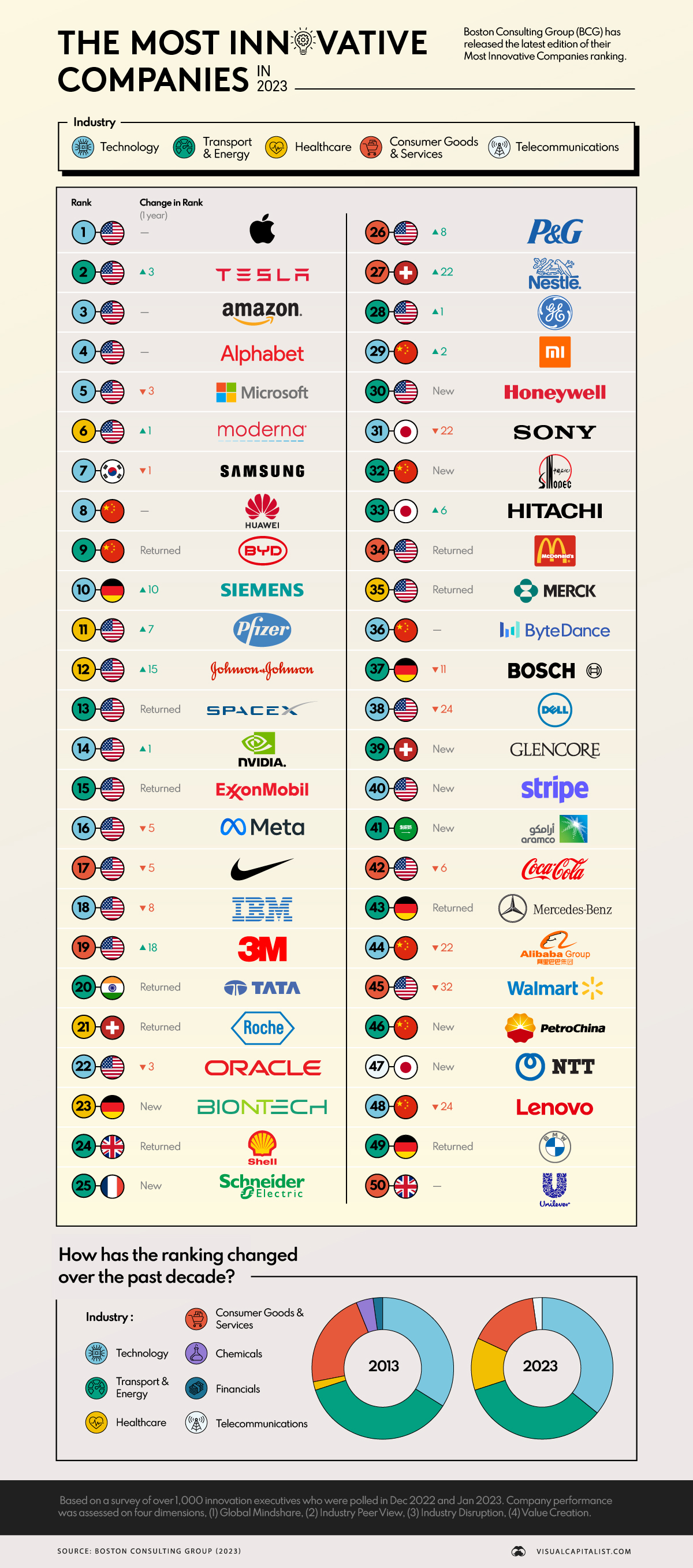Business Innovation Ratings: Understanding What Makes a Company Truly Innovative
Innovation is the backbone of progress in any industry. As businesses evolve, they must constantly innovate to stay competitive, relevant, and attractive to customers. Business innovation ratings are a key metric for evaluating how effectively companies adapt to new technologies, ideas, and methods. In this article, we’ll explore the significance of innovation ratings, how they are determined, and why they matter to businesses aiming for success.

What Are Business Innovation Ratings?
Business innovation ratings refer to assessments or rankings that evaluate how innovative a company is in terms of products, services, business models, and processes. These ratings are often compiled by independent research organizations, business journals, or industry analysts. They measure a company’s ability to foster creativity, implement new ideas, and influence market trends.
High innovation ratings signal a company’s potential to lead its industry through breakthroughs and new ways of thinking. This often correlates with greater market share, customer loyalty, and profitability.
Why Are Innovation Ratings Important?
Innovation ratings offer businesses a clear picture of their position in a competitive landscape. Here’s why these ratings matter:
-
Attract Investors: Companies with high innovation ratings are often more attractive to investors, as innovation can be a key driver of future growth.
-
Enhance Brand Reputation: Being recognized as an innovative company can boost your brand image and attract top talent, customers, and partners.
-
Competitive Advantage: Innovation is one of the most effective ways to differentiate your business from competitors. High ratings demonstrate your commitment to continuous improvement and market leadership.
The Benefits of High Innovation Ratings:
-
Increased Market Share: Innovators tend to capture more market share by creating products that meet customer needs in new ways.
-
Customer Loyalty: Innovative companies often foster stronger customer relationships by offering solutions that solve problems in unique ways.
-
Enhanced Profitability: By introducing disruptive technologies or services, companies can reduce costs or create new revenue streams, leading to higher profits.
Key Factors That Influence Innovation Ratings
Innovation ratings are influenced by various factors, including how businesses approach research and development, product innovation, and the integration of new technologies. Below are some of the key factors that determine innovation success:
1. Research and Development (R&D) Investment
Companies that invest heavily in research and development are often rated higher in innovation. A strong R&D program is essential for creating cutting-edge products and services. These businesses understand the importance of experimenting with new technologies and solutions to meet evolving customer demands.
2. Adoption of Emerging Technologies
The ability to integrate new technologies such as artificial intelligence (AI), machine learning, blockchain, and cloud computing into business models is a significant indicator of innovation. Companies that stay ahead of technological trends can improve efficiency, customer experience, and product offerings.
3. Product and Service Development
Companies that consistently release new products or services that disrupt their industry are often highly rated for innovation. This involves both developing entirely new concepts and improving existing offerings. Innovation isn’t just about new inventions; it’s also about finding better ways to meet customer needs.
4. Corporate Culture and Leadership
A culture that fosters creativity, risk-taking, and collaboration is essential for innovation. Leadership plays a crucial role in driving innovation by encouraging employees to experiment and think outside the box. Companies with strong leaders who prioritize innovation tend to score better in innovation ratings.
5. Customer-Centric Approach
Innovative companies are always in tune with their customers. They actively seek customer feedback, anticipate market needs, and adapt their offerings accordingly. A customer-centric approach allows companies to stay ahead of market trends and deliver products and services that resonate with consumers.
How Are Business Innovation Ratings Calculated?
Business innovation ratings are typically compiled through a combination of qualitative and quantitative analysis. Industry analysts, research firms, and other rating organizations evaluate companies based on several key performance indicators (KPIs). These may include:
-
R&D Expenditure: The amount a company spends on research and development.
-
Patents Filed: The number of patents a company holds is a strong indicator of innovation.
-
Product Launches: The frequency and impact of new product or service introductions.
-
Revenue Growth from Innovation: The percentage of a company’s revenue derived from newly introduced products or services.
-
Technological Adoption: How quickly and effectively a company integrates new technologies.
These metrics are combined to provide an overall rating, reflecting the company’s standing in terms of innovation within its industry.

Top-Ranked Innovative Companies
Each year, organizations such as Fast Company, Forbes, and MIT Technology Review publish lists of the most innovative companies across various sectors. These rankings are based on their ability to bring new, impactful ideas to market.
Some industries known for high innovation include:
-
Tech Companies: Apple, Google, and Tesla are examples of companies that consistently top innovation rankings.
-
Healthcare: Companies like Pfizer and Johnson & Johnson are highly rated for their contributions to medical advancements.
-
Automotive: Tesla, Rivian, and Ford lead in electric vehicle innovation.
-
Retail: Companies like Amazon and Nike continue to revolutionize shopping experiences and logistics.
These companies are not just focused on innovation for the sake of it but have integrated it into their overall business strategy, allowing them to achieve long-term growth.
How Innovation Ratings Can Help Your Business
Understanding business innovation ratings is not only beneficial for large companies but also for startups and small businesses. Here’s how these ratings can help:
1. Benchmarking Your Business
By comparing your company’s innovation efforts to top-ranked businesses, you can identify areas for improvement. Innovation ratings provide valuable insights into where your company stands and how it can evolve.
2. Attracting Partnerships and Clients
A strong innovation rating can attract potential partners and clients. Companies that value innovation tend to seek relationships with other forward-thinking businesses. By enhancing your innovation profile, you increase the potential for collaborations, strategic partnerships, and business deals.
3. Improving Internal Processes
When striving for higher innovation ratings, businesses often implement more efficient processes, encourage cross-functional collaboration, and streamline workflows. These improvements can lead to enhanced operational efficiency and cost savings.
The Future of Business Innovation Ratings
As innovation becomes more critical for business success, innovation ratings will continue to evolve. Here are some trends that may shape the future of business innovation ratings:
1. Increased Focus on Sustainability
Sustainability will play a bigger role in future innovation ratings. Companies that innovate with a focus on environmental impact, resource conservation, and sustainable practices will gain higher ratings as consumers and investors prioritize eco-friendly solutions.
2. AI-Driven Innovations
The growing influence of artificial intelligence and machine learning will continue to transform how companies innovate. Businesses that incorporate AI into their products and services will be highly rated in terms of innovation.
3. Global Expansion of Innovation Metrics
Innovation ratings will become more global, reflecting not only local achievements but also a company’s impact on the international market. Global expansion and the ability to innovate across diverse markets will become a more significant factor in innovation ratings.
FAQs on Business Innovation Ratings
1. How often are innovation ratings updated?
Innovation ratings are typically updated annually. However, some organizations may offer quarterly updates based on emerging trends and innovations.
2. Can small businesses achieve high innovation ratings?
Yes, small businesses can achieve high innovation ratings by leveraging creative solutions, adopting new technologies, and focusing on niche markets. Innovation is not limited to large enterprises.
3. How do I improve my company’s innovation rating?
To improve your innovation rating, invest in R&D, foster a culture of creativity, stay ahead of industry trends, and prioritize customer-centric innovation. Regularly track your progress and seek feedback from employees and customers.
4. Are innovation ratings the same across all industries?
No, innovation ratings are often tailored to specific industries, with different criteria and benchmarks based on industry standards and expectations.
Conclusion
Business innovation ratings are an essential tool for understanding how well companies are adapting to changes in technology, customer preferences, and market trends. These ratings not only help businesses benchmark their innovation efforts but also attract investors, clients, and top talent. By focusing on continuous innovation and adapting to new challenges, companies can stay ahead of the competition and drive sustainable growth.



